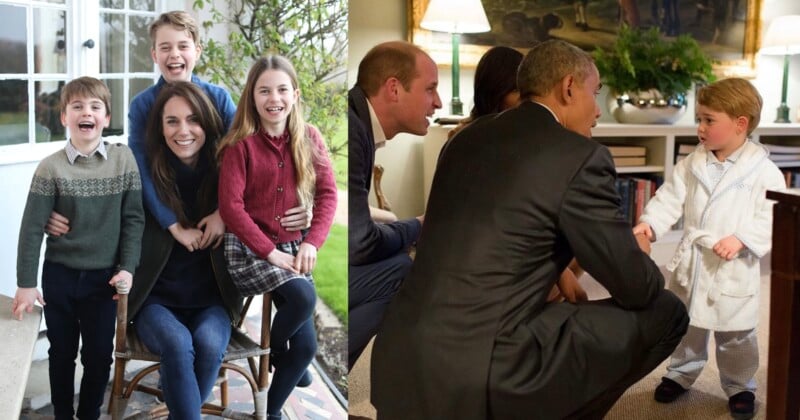White House Photographer Says Kate Middleton Photo is ‘Fake’ Not ‘Photoshopped’

Former White House Photographer Pete Souza has explained why the controversial image of Kate Middleton and her children should be described as “fake” — but certainly shouldn’t be called “Photoshopped.”
Last week, the Princess of Wales admitted to editing a Mother’s Day portrait of herself posing with her children in 2024’s biggest photo controversy so far.
Pete Souza is one of the most ethical photographers in the business. Listen to him. https://t.co/nIgVNnSzuy
— Diamond (@diamondfromcoal) March 14, 2024
The photograph showed clear evidence of being manipulated — with signs that details, such as Kate’s face, had been cut into the picture among other inconsistencies.
Now, Souza, who is best known for his work as Barack Obama’s official photographer for both of his presidential terms, has gone viral for his comments about the royal image and the difference between allowable Photoshop and a fake photo.
On Friday, Souza posted a photo on Instagram that he took of Prince George meeting President Obama in 2016 and described how he had technically “Photoshopped” the image.
But the photographer drew an important distinction between an image being “altered” compared to “Photoshopped.”
“I made this photograph of Prince George meeting President Obama in 2016. The digital file was ‘processed’ with Photoshop, a software program made by Adobe that virtually every professional photographer uses. Yet my photograph was certainly not ‘altered’ or ‘changed’ in content,” Souza writes on Instagram.
“I thought of this distinction after the photograph released earlier this week of Princess Catherine and her children was found to be ‘altered.’ Some stories referred to it as being ‘Photoshopped.’ And that made me cringe.”
‘Let’s Call Fake Photos What They Are: Fake’
Souza noted that photographers are allowed to edit a new image in certain circumstances and that there are accepted practices for Photoshopping an image within major picture agencies and news publications.
“Every publication like The New York Times, and every news organization like the Associated Press, have strict policies on using Photoshop to process images. Basically, the accepted practices allow a news photograph to be tweaked by adjusting the color balance; the density (make the raw file lighter or darker); and shadows and highlights.”
However, what Kate did in editing her Mother’s Day photograph goes beyond the realms of what is accepted. She altered the content of the family portrait to a point where it can’t simply be dubbed “Photoshopped.”
Instead, as a result of the Princess of Wales’ editing, Souza says that her photograph is more accurately described as “fake.”
“What’s not acceptable is to remove, add, or change elements in the photograph. That would be altering the content,” Souza writes.
“For example, if there’s a telephone pole sticking out of a person’s head, you wouldn’t be allowed to remove it. Or if someone mashes multiple family pictures together into one, that wouldn’t be acceptable.”
The White House Photographer concludes: “So, for the sake of consistency, let’s call fake photos what they are: ‘fake’ or ‘altered’ and stop using the word ‘Photoshopped.'”
Fake Photos Need to Be Called Out
Souza doubled down on his statement in the Instagram comments after a social media user criticized the uproar and debate around Middleton’s edited Mother’s Day image.
Pete Souza has time for derangers this week! Love to see it. 👌🏾 pic.twitter.com/Oqc2gq2i0y
— Alexandra (@alexandrachasy) March 14, 2024
When the individual argued that the commotion around the manipulated royal portrait was “idiotic” and needed to stop, the photographer wholeheartedly disagreed.
“Disagree. Fake photos are fake,” Souza responded in the comments.
“It’s idiotic if we don’t call them out.”
Souza also went on to comment that the distinction between a “Photoshopped” image and a “fake” photograph was even more important given the upcoming U.S. election.
The speculation around Kate’s doctored image has had far-reaching consequences for the already dwindling trust in the still image — with royal photographers even being forced to deny that their own pictures of the princess were altered.
Indeed, in an age of generative AI and deepfakes, it could be said that the royal scandal has eroded any remaining trust in photographs.
Image credits: Header photo (from left to right) by Princess of Wales and Pete Souza.